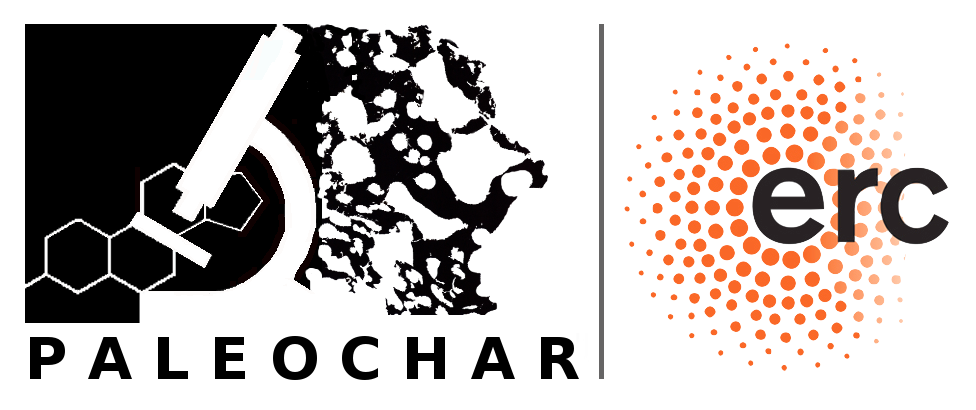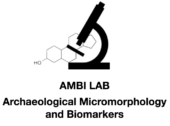PALEOCHAR

Insights into the Neanderthals and their demise from the study of microscopic and molecular charred matter in Middle Palaeolithic sediments (ERC-CoG-2014-PALEOCHAR)
Who were the Neanderthals and what caused their demise? To answer these questions, the classic approach in archaeology relies on the analysis of the Neanderthals’ stone-tool assemblages and the mineralized bone remains of their dietary intake. Although this approach has yielded a great deal of important information about the Neanderthals’ fate, it is also limited in the sense that the only evidence that is considered is in-organic in nature. In this ERC Consolidator Grant project we attempt to approach these questions by considering microscopic and molecular evidence that is organic in nature. By studying the organic sedimentary record at such fine scales, we are able to extract information about, for example, the fat contents of the Neanderthal food, the way they made fire, the arrangements of their living spaces, their surrounding vegetation and the climatic conditions where they lived. By combining these different sources of information we aim to provide a more complete picture of the Neanderthal world.
Specifically, the PALEOCHAR project examines how Neanderthal diet, fire technology, settlement patterns, and surrounding vegetation at a local scale (individual sites) were affected by changing climatic conditions. To do so, the project will integrate methodologies from micromorphology and organic geochemistry. A key and innovative aspect of the project is the consideration of microscopic and molecular evidence that is both organic and charred in nature. Our recent experimental and geoarchaeological work on Palaeolithic fire has led to the discovery of black layers from archaeological fireplaces as invaluable contexts of preserved organic matter. The black layers typically documented in Middle Palaeolithic hearths represent the charred ground beneath the fire. Therefore, they can be considered as snapshots of living floors, rich in residues from human activity as well as from soils and vegetation of the natural surroundings. Crucially, experimental data has shown that the average temperatures associated with black layers – below 300°C on average – are high enough for the charring of organic compounds and to make them unappealing to biodegrading soil fauna, but not as high as to destroy their biomarker chemical fingerprints. Therefore, once charred, organic compounds may preserve well within sediment for indefinite periods of time as long as the sedimentary environment does not undergo strong diagenesis. The PALEOCHAR project will target this important window of organic matter preservation by exploring the black layers of intact Neanderthal fireplaces.
Check out our website!
Publications:
Connolly, R., Jambrina-Enríquez, M., Herrera-Herrera, A.V., & Mallol, C. 2021. Investigating Hydrogen Isotope Variation during Heating of n-Alkanes under Limited Oxygen Conditions: Implications for Palaeoclimate Reconstruction in Archaeological Settings. Molecules 26(7): p.1830. http://dx.doi.org/10.3390/molecules26071830
de Vera, C. R., Herrera-Herrera, A. V., Jambrina-Enríquez, M., Sossa-Ríos, S., González-Urquijo, J., Lazuen, T., & Mallol, C. 2020. Micro-contextual identification of archaeological lipid biomarkers using resin-impregnated sediment slabs. Scientific reports, 10(1), 1-14. https://doi.org/10.1038/s41598-020-77257-x
Herrera-Herrera, A. V., Mohamed-Rodríguez, N., Socas-Rodríguez, B., & Mallol, C. 2020. Development of a QuEChERS-based method combined with gas chromatography-mass spectrometry for the analysis of alkanes in sediments. Microchemical Journal, 104774. https://doi.org/10.1016/j.microc.2020.104774
Lambrecht, G., & Mallol, C. 2020. Autofluorescence of experimentally heated bone: Potential archaeological applications and relevance for estimating degree of burning. Journal of Archaeological Science: Reports, 31, 102333. https://doi.org/10.1016/j.jasrep.2020.102333
Lambrecht, G., de Vera, C. R., Jambrina-Enríquez, M., Crevecoeur, I., Gonzalez-Urquijo, J., Lazuen, T., & Mallol, C. 2021. Characterisation of charred organic matter in micromorphological thin sections by means of Raman spectroscopy. Archaeological and Anthropological Sciences, 13(1), 1-15. https://doi.org/10.1007/s12520-020-01263-3
Leierer, L., Alonso, Á. C., Pérez, L., Lagunilla, Á. H., Herrera-Herrera, A. V., Connolly, R., Jambrina-Enríquez, M., Hernández, C. & Mallol, C. 2020. It’s getting hot in here–Microcontextual study of a potential pit hearth at the Middle Paleolithic site of El Salt, Spain. Journal of Archaeological Science, 123, 105237. https://doi.org/10.1016/j.jas.2020.105237
Mallol, C., Hernández, C., Mercier, N., Falguères, C., Carrancho, Á., Cabanes, D., Vidal-Matutano, P., Connolly, R., Pérez, L., Mayor, A. and Arous, E.B., 2019. Fire and brief human occupations in Iberia during MIS 4: Evidence from Abric del Pastor (Alcoy, Spain). Scientific reports, 9(1), pp.1-11. https://doi.org/10.1038/s41598-019-54305-9
https://doi.org/10.1371/journal.pone.0221592
Leierer, L., Jambrina-Enríquez, M., Herrera-Herrera, A.V., Connolly, R., Hernández, C.M., Galván, B. and Mallol, C., 2019. Insights into the timing, intensity and natural setting of Neanderthal occupation from the geoarchaeological study of combustion structures: A micromorphological and biomarker investigation of El Salt, unit Xb, Alcoy, Spain. PloS one, 14(4), p.e0214955.https://doi.org/10.1371/journal.pone.0214955
Buonasera, T., Herrera-Herrera, A.V. and Mallol, C., 2019. Experimentally derived sedimentary, molecular, and isotopic characteristics of bone-fueled hearths. Journal of Archaeological Method and Theory, 26(4), pp.1327-1375. https://doi.org/10.1007/s10816-019-09411-3
Connolly, R., Jambrina-Enríquez, M., Herrera-Herrera, A.V., Vidal-Matutano, P., Fagoaga, A., Marquina-Blasco, R., Marin-Monfort, M.D., Ruiz-Sánchez, F.J., Laplana, C., Bailon, S. and Pérez, L., 2019. A multiproxy record of palaeoenvironmental conditions at the Middle Palaeolithic site of Abric del Pastor (Eastern Iberia). Quaternary Science Reviews, 225, p.106023.
https://doi.org/10.1016/j.quascirev.2019.106023
Jambrina-Enríquez, M., Herrera-Herrera, A.V., de Vera, C.R., Leierer, L., Connolly, R. and Mallol, C., 2019. n-Alkyl nitriles and compound-specific carbon isotope analysis of lipid combustion residues from Neanderthal and experimental hearths: identifying sources of organic compounds and combustion temperatures. Quaternary Science Reviews, 222, p.105899. https://doi.org/10.1016/j.quascirev.2019.105899
Herrera-Herrera, A.V. and Mallol, C., 2018. Quantification of lipid biomarkers in sedimentary contexts: Comparing different calibration methods. Organic geochemistry, 125, pp.152-160. https://doi.org/10.1016/j.orggeochem.2018.07.009
Jambrina-Enríquez, M., Herrera-Herrera, A.V. and Mallol, C., 2018. Wax lipids in fresh and charred anatomical parts of the Celtis australis tree: Insights on paleofire interpretation. Organic Geochemistry, 122, pp.147-160. https://doi.org/10.1016/j.orggeochem.2018.05.017
